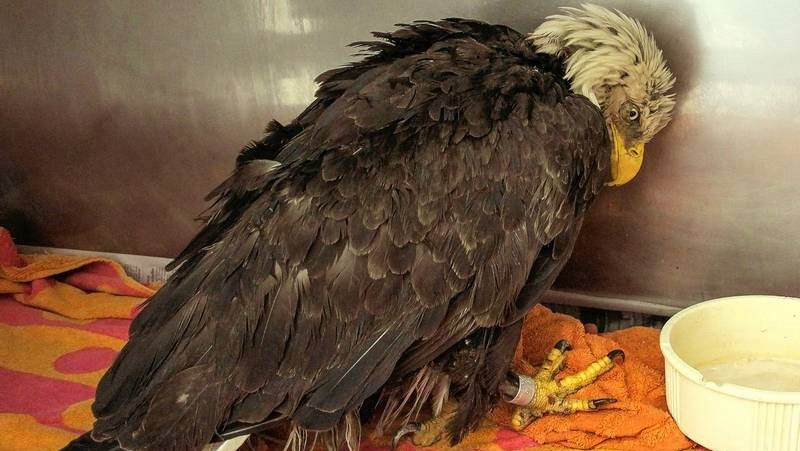
Dangers of leaded bullets
Lead ammunition is still widely used for hunting and shooting. It is currently likely the greatest source of lead that is knowingly discharged into the environment in the USA.
For decades, poisoning from spent lead ammunition was mainly regarded as a disease of waterfowl. We now know that it also puts at risk the health of raptors, scavengers and even humans who frequently consume hunted game.
Scientists across the globe have published consensus statements on the health risks of lead ammunition, and the need for its replacement by non-toxic alternatives. The still widespread use of lead ammunition is a pressing One Health Issue.
Why should you care?
Conservation efforts have brought the majestic bald eagles back, but they are still facing a significant health issues due to lead poisoning, mostly caused by conventional bullets used for deer hunting.
Every year when the hunting season starts, wildlife rehabilitation centres around the country see a number of bald eagles with acute lead poisoning - a heart breaking condition that causes respiratory issues, inability to move, irreversible neurological issues and death. Just a fingernail’s length of lead can poison a bald eagle.
In addition to lead affecting wildlife, it also affects us. Eighty percent of ground meat packages of wildharvested deer contain lead, and this lead is bioavailable. According to a study by CDC, eating game is known to cause 50% higher lead blood levels than seen in general population.
YouTube: A Needless Danger to Eagles and Ourselves
Scientific American
Switching to non-lead is easier than you think
Switching to non-lead bullets is not an anti-gun or anti-hunt movement, nor does it have to be expensive. The plain and simple fact is that there is no sense in shooting know neurotoxins to the environment when we have good alternatives available.
When you compare non-lead to higher-quality cartridges, the price is actually about the same. Shooting with lead might still make sense when practicing in the range and shooting with cheap bargain-barrel bullets. But there’s few good excuses left for using lead in deer hunting, as a single season generally requires less than one box of shells. The prices of non-lead ammunition are also constantly coming down.
Thousands of hunters are already using non-lead because they care about what their families are eating and they care about the environment. This includes the author of todays piece, who admits to shooting with lead when practicing in a closed shooting range but chooses copper every time when out in the field.
Questions, comments, feedback about today's Weekly Update? Please email Dr. Heidi Vesterinen
Receive the Weekly Update right in your inbox on Tuesdays and Thursdays. Subscribe now at z.umn.edu/WeeklyUpdateSubscribe
